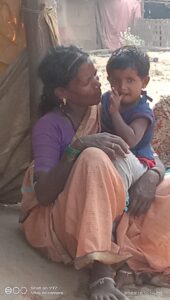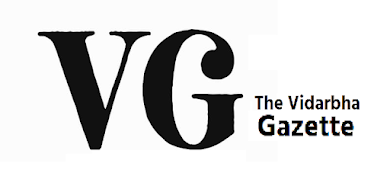Adivasis in the Central Budget

The Particularly Vulnerable Tribal Groups (PVTG) have figured prominently in the Central Budget which is a welcome step. FM Nirmala Sitharaman in her budget speech listed the welfare of PVTG in the Priority 2 category saying, “Pradhan Mantri PVTG Development Mission: To improve socio-economic conditions of the particularly vulnerable tribal groups (PVTGs), Pradhan Mantri PVTG Development Mission will be launched. This will saturate PVTG families and habitations with basic facilities such as safe housing, clean drinking water and sanitation, improved access to education, health and nutrition, road and telecom
connectivity, and sustainable livelihood opportunities. An amount of 15,000 crore will be made available to implement the Mission in the next three years under the Development Action Plan for the Scheduled Tribes.
Out of total of 75 PVTG communities in the country, there are three Adivasi communities who live in Maharashtra – Katkaris, Kolams and Madias. All the three communities are faced with multiple problems pertaining to health, livelihood and education. Apart from this there are other serious problems of discrimination and exploitation. It was exposed in the media that Katkaris in Western Maharashtra are exploited as bonded labourers and are forced out of poverty to send their children to work as bonded labourers. In Vidarbha region the Kolams are struggling for land rights as their land has been alienated to non-tribals and restoration is a very slow process. They also suffer from usurious moneylenders and are forced to pay high interests upto 150%. Financial inclusion, forest rights and land rights are the three most important issues for Kolams. The Madias are in the worst situation because many of them live in the conflict-ridden areas such as Gadchiroli district of Maharashtra and Bastar region of Chhattisgarh. In Gadchiroli the Madias are in the midst of a struggle because of the Surjagad mining project which has destroyed forest and displaced communities. The decades of violence, both from Naxalite as well as by police, has harmed the confidence and resilience of this community more than any other.
It remains to be seen whether the ambitious PM-PVTG Development Mission is able to bring fundamental changes in the lives of these communities in Maharashtra and elsewhere. It also remains to be seen how the schemes will utilise and strengthen the Gram Sabhas because most of the PVTG communities live in PESA areas where the Gram Sabha is invested with powers to ensure overall community welfare.
There are some other programmes announced in the budget which will could impact the Adivasis if implemented properly – for example the emphasis on tourism. As we are seeing in Vidarbha, wildlife tourism is booming business and it has great livelihood potential for Adivasis. Similarly the budget has announced that in the next three years, the central government will recruit 38,800 teachers and support staff for the 740 Eklavya Model Residential Schools, serving 3.5 lakh tribal students.
There is an increase in the budget of the Ministry of Tribal Affairs from Rs. 7300 crores in 2022-23 to more than Rs.12000 crores in 2023-24. We can interpret it as the ruling party’s increased interest in the Adivasi community keeping an eye on the forthcoming general elections 2024. In fact, ever since the elevation of Smt. Draupadi Murmu as the first Adivasi person to become the President, this interest in the Adivasi vote has remained a matter of intense discussion.
Two other programmes that of importance to tribal and rural communities of Vidarbha are the sub-scheme under PM-Matsya Sampada Yojana and the newly introduced Amrit Dharohar Yojana. The former has an allocation of Rs. 6000 crores to enable enable activities of fishermen, fish vendors, and micro & small enterprises, improve value chain efficiencies, and expand the market base. Vidarbha has a large population of fishing communities – Dhivars, Bhois and Kewats who can benefit from this.
In 2017 Maharashtra government had identified 507 important wetland sites in the state, a majority of which are located in Vidarbha. Of the 507 wetlands taken up for conservation maximum are from Vidarbha with Nagpur (35), Bhandara (88), Gondia (42), Gadchiroli (52), Chandrapur(41) and Yavatmal (21). Now the government has introduced Amrit Dharohar which can not only conserve the sites but increase eco-tourism.
However, the best of schemes often fail because of lack of implementation and apathetic attitude of the implementing agencies. One can only hope that this will not be the case and Vidarbha will get to see some good outcomes.
Pic. credit- Paromita Goswami
from WordPress https://ift.tt/gpk6lAq
via IFTTT
Adivasis in the Central Budget

The Particularly Vulnerable Tribal Groups (PVTG) have figured prominently in the Central Budget which is a welcome step. FM Nirmala Sitharaman in her budget speech listed the welfare of PVTG in the Priority 2 category saying, “Pradhan Mantri PVTG Development Mission: To improve socio-economic conditions of the particularly vulnerable tribal groups (PVTGs), Pradhan Mantri PVTG Development Mission will be launched. This will saturate PVTG families and habitations with basic facilities such as safe housing, clean drinking water and sanitation, improved access to education, health and nutrition, road and telecom
connectivity, and sustainable livelihood opportunities. An amount of 15,000 crore will be made available to implement the Mission in the next three years under the Development Action Plan for the Scheduled Tribes.
Out of total of 75 PVTG communities in the country, there are three Adivasi communities who live in Maharashtra – Katkaris, Kolams and Madias. All the three communities are faced with multiple problems pertaining to health, livelihood and education. Apart from this there are other serious problems of discrimination and exploitation. It was exposed in the media that Katkaris in Western Maharashtra are exploited as bonded labourers and are forced out of poverty to send their children to work as bonded labourers. In Vidarbha region the Kolams are struggling for land rights as their land has been alienated to non-tribals and restoration is a very slow process. They also suffer from usurious moneylenders and are forced to pay high interests upto 150%. Financial inclusion, forest rights and land rights are the three most important issues for Kolams. The Madias are in the worst situation because many of them live in the conflict-ridden areas such as Gadchiroli district of Maharashtra and Bastar region of Chhattisgarh. In Gadchiroli the Madias are in the midst of a struggle because of the Surjagad mining project which has destroyed forest and displaced communities. The decades of violence, both from Naxalite as well as by police, has harmed the confidence and resilience of this community more than any other.
It remains to be seen whether the ambitious PM-PVTG Development Mission is able to bring fundamental changes in the lives of these communities in Maharashtra and elsewhere. It also remains to be seen how the schemes will utilise and strengthen the Gram Sabhas because most of the PVTG communities live in PESA areas where the Gram Sabha is invested with powers to ensure overall community welfare.
There are some other programmes announced in the budget which will could impact the Adivasis if implemented properly – for example the emphasis on tourism. As we are seeing in Vidarbha, wildlife tourism is booming business and it has great livelihood potential for Adivasis. Similarly the budget has announced that in the next three years, the central government will recruit 38,800 teachers and support staff for the 740 Eklavya Model Residential Schools, serving 3.5 lakh tribal students.
There is an increase in the budget of the Ministry of Tribal Affairs from Rs. 7300 crores in 2022-23 to more than Rs.12000 crores in 2023-24. We can interpret it as the ruling party’s increased interest in the Adivasi community keeping an eye on the forthcoming general elections 2024. In fact, ever since the elevation of Smt. Draupadi Murmu as the first Adivasi person to become the President, this interest in the Adivasi vote has remained a matter of intense discussion.
Two other programmes that of importance to tribal and rural communities of Vidarbha are the sub-scheme under PM-Matsya Sampada Yojana and the newly introduced Amrit Dharohar Yojana. The former has an allocation of Rs. 6000 crores to enable enable activities of fishermen, fish vendors, and micro & small enterprises, improve value chain efficiencies, and expand the market base. Vidarbha has a large population of fishing communities – Dhivars, Bhois and Kewats who can benefit from this.
In 2017 Maharashtra government had identified 507 important wetland sites in the state, a majority of which are located in Vidarbha. Of the 507 wetlands taken up for conservation maximum are from Vidarbha with Nagpur (35), Bhandara (88), Gondia (42), Gadchiroli (52), Chandrapur(41) and Yavatmal (21). Now the government has introduced Amrit Dharohar which can not only conserve the sites but increase eco-tourism.
However, the best of schemes often fail because of lack of implementation and apathetic attitude of the implementing agencies. One can only hope that this will not be the case and Vidarbha will get to see some good outcomes.
Pic. credit- Paromita Goswami





0 Comments